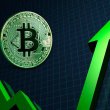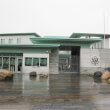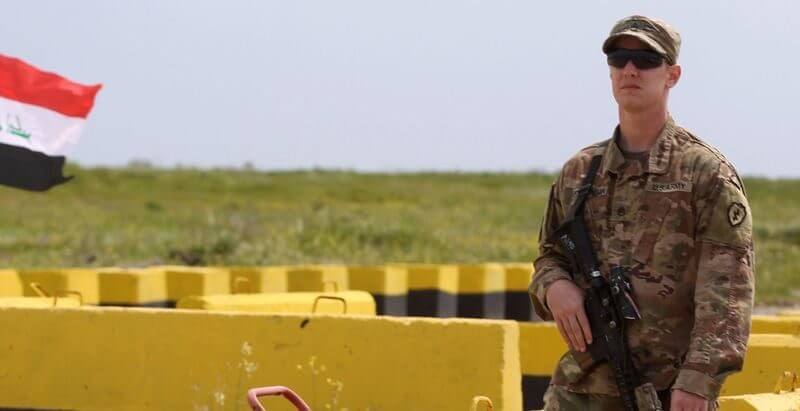By: Micaela Burrow, Daily Caller News Foundation
Iran is using resistance groups in Iraq to increase pressure on the U.S. and exploit the Biden administration’s fear of escalation to gain power in the Middle East, according to experts.
The Pentagon confirmed Thursday Islamic militant groups in Iraq and Syria have attacked bases housing U.S. and coalition troops at least 28 times since Oct. 17 in a sharp and unusual outburst of hostilities as the U.S. moved to support Israel’s war against another Iran-backed terrorist organization, Hamas, in Gaza. While DOD officials insist the uptick in attacks is unrelated to the Israel-Gaza conflict, Iran is likely releasing its proxies to disrupt the U.S.’ ability to help Israel defeat Hamas and achieve a political victory, an expert in Iranian proxy groups told the Daily Caller News Foundation.
“The Islamic Republic sensed an opportunity that there may be a loaded gun, but that loaded gun was in a shaky hand. And to disabuse America of going any further, they struck first,” Behnam Ben Taleblu, a senior fellow at the Foundation for Defense of Democracies, told the DCNF.
Militias have claimed a total of 47 attacks on locations with U.S. or coalition troops, or both, as of Nov. 5., according to a tracker compiled by the Washington Institute for Near East Policy (WINEP). Of those, the Islamic Resistance in Iraq (IRI) has taken responsibility for 33.
The number is higher than what the Pentagon has acknowledged likely because the Pentagon is only counting attacks that strike close to U.S. positions or were on course to do so. If a missile or drone makes impact miles wide of a base, complicating the assessment of the intended the target, U.S. Central Command (CENTCOM) doesn’t count it as an attempted attack, Pentagon press secretary Sabrina Singh said.
It’s also unclear whether U.S. forces were stationed at the targets of every claimed launch, WINEP’s tracker shows.
“I do think we’re still walking slowly on a path towards serious regional conflict,” Charles Lister, a senior fellow at the Middle East Institute who focuses on Syria and counterterrorism, said at an Oct. 31 event.
Iran and its proxies “are coaxing us and the Israelis into into acting in a way that they would be able to present a serious escalation. And in so doing, I think they’re undermining the issue of deterrence and placing particularly the U.S. in an especially tight corner in Syria and Iraq,” Lister said.
A group known as Tashkil al-Waritheen initially claimed responsibility for the first attack on Oct. 17, when one Iranian-origin drone struck Harir Air Base in Iraqi Kurdistan, according to researchers at WINEP. However, IRI jumped in to take credit and the Waritheen statement disappeared.
But IRI is new. A social media channel purporting to be the group’s front-facing voice emerged on Oct. 18, releasing in its first post a statement assuming responsibility for the drone attacks on a base housing U.S. troops.
IRI emerged as a single umbrella under which to coordinate attacks on U.S. troops based in Iraq and Syria, according to WINEP. A coalition strategy allows each sub-group to escape attribution for each individual attack and may suggest increased involvement from Tehran.
Each militia comprising IRI initially coalesced with unique aims and motivations, and subsequently were co-opted by the Iranian government perceiving an overlap in interests, Taleblu explained.
Since Oct. 17, however, maintaining an appearance of coordination and unity “strongly suggests” that Iran’s Islamic Revolutionary Guard Corps (IRGC) elite Quds Force “is corralling its many Iraqi ‘resistance’ proxies, which otherwise tend to argue over local leadership,” according to WINEP.
The U.S. military conducted airstrikes against buildings in eastern Syria associated with the IRGC and the proxy groups it controls on Oct. 27 in response to the attacks.
Orders for the strikes came after a drone crashed into Erbil air base on Oct. 25 and failed to detonate, The Wall Street Journal reported. Had it exploded, the blast would likely have killed or seriously injured U.S. troops, U.S. defense officials told the outlet.
“They are aiming to kill,” a defense official told the outlet. “We have just been lucky.”
Although attempted attacks persist, the U.S. has not engaged in further retaliation but added additional defenses and deployed 1,200 new troops to the CENTCOM region. The Biden administration fears an escalating war across the Middle East and has asserted that the attacks are distinct from what is going on between Israel and Hamas.
“This war isn’t a war between Israel and Gaza. It’s a war between falsehood and truth, a war between the Arrogant Powers and faith,” Iran’s Ayatollah Ali Kahmenei said in a social media post Wednesday, appearing to tie the conflicts into one.
Tehran is “trying to drive a wedge between Washington and Jerusalem,” Taleblu explained to the DCNF. It will take advantage of the Biden administration’s “fear of a wider war and escalation to feed into a political call for a ceasefire, to politically and militarily restrain Israel from going all the way.”
Iran does not want a conventional war with the U.S. or Israel. However, its militias are postured to escalate the conflict if Iran gives the order, according to a WINEP analysis.
Iran and its proxy militias intend to escalate conflict by attacking U.S. troops based in the region, defense and military official have said.
On Thursday, the group announced the beginning of a “new phase of confronting the enemies” alongside a photo of what analysts said appeared to be a low-tech cruise missile similar to the kind Iran is supplying to the Houthis in Yemen. The group claimed another attack on Harir air base near Erbil, which CNN later confirmed with a defense official.
The group has expanded the aperture of its potential targets in recent days.
“In support of our people in Gaza, and in response to the massacres committed by the usurping entity against Palestinian civilians,” the Islamic Resistance said in a statement on Nov. 2. It claimed to have targeted a “vital target for the Zionist entity on the coast of the Dead Sea”; the “Zionist entity” referring to Israel. It was the first time the group claimed an attack on Israeli targets, but as of this writing there was no visual evidence or official confirmation of attempted strikes near the Dead Sea coming from the east.
“This is Iran testing out how to actually conduct a multi-front war against Israel while trying to keep the Americans out. That’s where the militias in Iraq and Syria have been a key part of that — to keep America distracted and to threaten a wider regional war,” Taleblu said.
Attacks come in a mix of rockets and one-way attack drones, or suicide/kamikaze drones, that explode on impact with their targets. At least 21 troops sustained minor injuries during the initial wave of attacks, seemingly in the process of intercepting oncoming projectiles, while one U.S. contractor died shortly after suffering cardiac arrest during a false alarm.
The U.S. maintains about 2,500 troops in Iraq and an additional 900 in Syria, working with partner forces in the region to ensure the long-term defeat of the Islamic State, according to Reuters. Iraq-based troops shifted to a non-combat role in 2021, the last time the Pentagon publicly disclosed the number of troops present in the country, according to a Congressional Research Service report last updated in 2022.
American troops are dispersed in sites throughout the region.
Al-Asad Air Base in Iraq’s Anbar province to Baghdad’s northwest, like the other recent targets, have come under attack by Iran-backed forces in the past, Reuters reported. U.S. troops have trained Iraqi forces at the base.
Another frequent target has been the Al-Tanf garrison in Syria, located near the Iraqi border. Since 2016, the garrison has served as a hub for training Syrian opposition forces in counterterrorism tactics, according to the International Crisis Group.
IRI has also targeted a base in eastern Syria’s Deir el-Zour province near the Conoco gas field. Mission Support Site Conoco is one of several small outposts in Syria where the U.S. and Syrian Democratic Forces (SDF) have created a bubble outside of Syrian President Bashar al-Assad’s control, Reuters reported. Some strikes were also aimed at the al-Omar oilfield, also in Deir Ezzor.
Strikes or purported strikes were aimed at a handful of other locations, including the base in Erbil, Iraq.
Related Story: More Than Two Dozen U.S. Troops Injured in Iran-Backed Militia Strikes, Pentagon Reveals After Days of Silence










